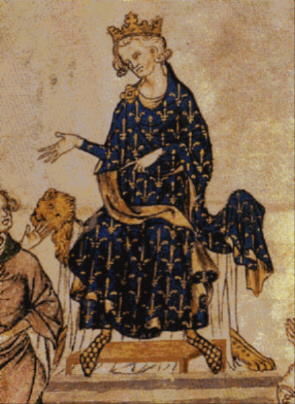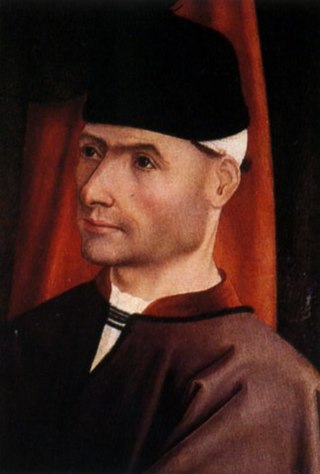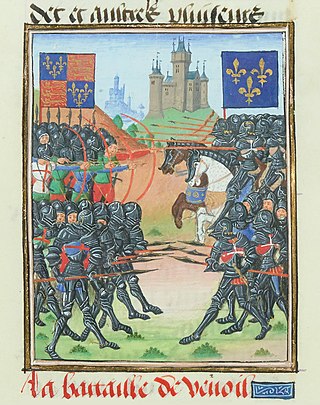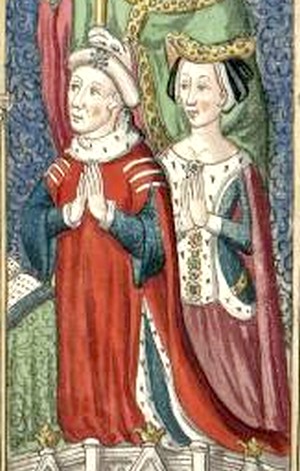| |||||
| Decades: | |||||
|---|---|---|---|---|---|
| See also: | Other events of 1423 History of France • Timeline • Years | ||||
Events from the year 1423 in France
| |||||
| Decades: | |||||
|---|---|---|---|---|---|
| See also: | Other events of 1423 History of France • Timeline • Years | ||||
Events from the year 1423 in France
| | This section needs expansion. You can help by adding to it. (October 2015) |

The 1420s decade ran from January 1, 1420, to December 31, 1429.
Year 1423 (MCDXXIII) was a common year starting on Friday of the Julian calendar.

Louis XI, called "Louis the Prudent", was King of France from 1461 to 1483. He succeeded his father, Charles VII. Louis entered into open rebellion against his father in a short-lived revolt known as the Praguerie in 1440. The king forgave his rebellious vassals, including Louis, to whom he entrusted the management of the Dauphiné, then a province in southeastern France. Louis's ceaseless intrigues, however, led his father to banish him from court. From the Dauphiné, Louis led his own political establishment and married Charlotte of Savoy, daughter of Louis, Duke of Savoy, against the will of his father. Charles VII sent an army to compel his son to his will, but Louis fled to Burgundy, where he was hosted by Philip the Good, the Duke of Burgundy, Charles' greatest enemy.

Philip VI, called the Fortunate or the Catholic and of Valois, was the first king of France from the House of Valois, reigning from 1328 until his death in 1350. Philip's reign was dominated by the consequences of a succession dispute. When King Charles IV of France died in 1328, the nearest male relative was his nephew King Edward III of England, but the French nobility preferred Charles's paternal cousin Philip.

Pierre de Bourdeille, called the seigneur et abbé de Brantôme, was a French historian, soldier and biographer.

Arthur III, more commonly known as Arthur de Richemont, was briefly Duke of Brittany from 1457 until his death. He is noted primarily, however, for his role as a leading military commander during the Hundred Years' War. Although Richemont briefly sided with the English once, he otherwise remained firmly committed to the House of Valois. He fought alongside Joan of Arc, and was appointed Constable of France. His military and administrative reforms in the French state were an important factor in assuring the final defeat of the English in the Hundred Years' War.

Jean d'Orléans, Count of Dunois, known as the "Bastard of Orléans" or simply Jean de Dunois, was a French military leader during the Hundred Years' War who participated in military campaigns with Joan of Arc. His nickname, the "Bastard of Orléans", was a mark of his high status, since it acknowledged him as a first cousin to the king and acting head of a cadet branch of the royal family during his half-brother's captivity. In 1439 he received the county of Dunois from his half-brother Charles, Duke of Orléans, and later King Charles VII made him count of Longueville.

The Battle of Cravant was fought on 31 July 1423, during the Hundred Years' War between English and French forces at the village of Cravant in Burgundy, at a bridge and ford on the banks of the river Yonne, a left-bank tributary of the Seine, southeast of Auxerre. The battle ended in a victory for the English and their Burgundian allies.

The Battle of Castillon between the forces of England and France took place on 17 July 1453 in Gascony near the town of Castillon-sur-Dordogne. Historians regard this decisive French victory as marking the end of the Hundred Years' War.

The Battle of Patay, fought on 18 June 1429 during the Hundred Years' War, was the culmination of the Loire Campaign between the French and English in north-central France. In this engagement, the horsemen of the French vanguard inflicted heavy casualties on an English army; most of them sustained by the longbowmen as the English cavalry fled. In addition, all but one of the senior English commanders were captured. A victory often credited to Joan of Arc, she was in fact not present for the battle as she had remained with the main body of the French army. The vanguard at Patay was led by La Hire and Jean Poton de Xaintrailles.

The Battle of Verneuil was a battle of the Hundred Years' War, fought on 17 August 1424 near Verneuil-sur-Avre in Normandy between an English army and a combined Franco-Scottish force, augmented by Milanese heavy cavalry. The battle was a significant English victory, and was described by them as a second Agincourt.

Louis de Bourbon, younger son of John I, Count of La Marche and Catherine de Vendôme, was a French prince du sang, as well as Count of Vendôme from 1393, and Count of Castres from 1425 until his death.

John Stewart, Earl of Buchan was a Scottish nobleman and soldier who fought alongside the Kingdom of France during the Hundred Years War. In 1419, he was sent to France by his father the Duke of Albany, Regent of Scotland, with a Scottish army of 6,000 men. Stewart led the combined Franco-Scottish army at the Battle of Baugé on 21 March 1421, where he comprehensively defeated the English, proving that they could at last be beaten.

The Lancastrian War was the third and final phase of the Hundred Years' War between England and France. It lasted from 1415, when King Henry V of England invaded Normandy, to 1453, when the English lost Bordeaux. It followed a long period of peace from the end of the Caroline War in 1389. The phase is named after the House of Lancaster, the ruling house of the Kingdom of England, to which Henry V belonged.

Hélie de Talleyrand-Périgord was a French Cardinal, from one of the most aristocratic families in Périgord, south-west France. Hélie was born at Périgueux, third son of Elias VII, Count of Périgord, and Brunissende of Foix, daughter of Roger Bernard III, comte de Foix. His elder brothers were Archambaud (IV), who inherited the County, and Roger-Bernard ; his younger brother was Fortanier, and his sisters were Agnes, Jeanne, Marguerite, and Rosemburge. As a third son Hélie was destined for an ecclesiastical career. His brother, Roger Bernard, too, had an ecclesiastical career, becoming Canon of Lyon. But then, the eldest son died, and Roger-Bernard became the Count of Périgord. Hélie became a major figure in the Avignon papacy, and also a diplomat engaged in the negotiations of the Hundred Years' War, having friendships in both English and French royal families. In his last months he had been appointed Papal Legate for a crusade against the Turks.

Hélie de Bourdeilles was a French Franciscan, Archbishop of Tours and Cardinal.
Events from the 1420s in England.

The Hundred Years' War was a series of armed conflicts fought between the kingdoms of England and France during the Late Middle Ages. It originated from English claims to the French throne. The war grew into a broader power struggle involving factions from across Western Europe, fueled by emerging nationalism on both sides. The periodization of the war takes place over 116 years, wherein the war was interrupted by several years of truces.
Events from the year 1429 in France
Antoine de Chabannes (1408–1488), from 1439 Count of Dammartin, was a significant military and political figure of 15th-century France. An indefatigable fighter, during his long career he joined or led numerous military campaigns all over France and beyond. He served the French Valois kings Charles VII, Louis XI and Charles VIII, but also participated in two aristocratic uprisings, the Praguerie against Charles VII in 1440 and the War of the Public Weal in 1465 against Louis XI. Associated early in his life with the Armagnac faction, he fought in Charles VII's campaigns against England, including those involving Joan of Arc, and also remained generally opposed to the Burgundians and their Habsburg successors. 18th-century scholar Charles Pinot Duclos described him as "one of the bravest men of his time, sincere, faithful, quick-tempered, a keen friend and implacable enemy". Claude Villaret called him "the most experienced general of his era".